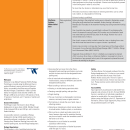Visit Us
We are land stewards, guided by Aldo Leopold's teachings that land is a community of life and that love and respect for the land is an extension of ethics. We seek to reflect that land ethic in our stewardship and to instill it in others.
The Refuge provides opportunities for the public to enjoy compatible wildlife-dependent public use activities including hunting, fishing, wildlife observation and photography, environmental education, and interpretation. The Refuge is a very popular community and tourist destination with 240,000 visits annually!
Interpretation
"Interpretation is the identification and communication of important messages about natural and cultural resources to diverse audiences. Interpretation is designed to reveal relationships about the nature, origin, and purpose of a resource, landscape, or site in a way that forges connections between the interests of the audience and meanings inherent in the resource" (National Association for Interpretation 2011). Interpretation is a resource management tool that can be designed to develop understanding, and through understanding comes appreciation, and through appreciation comes protection of our natural resources.
Comprehensive Conservation Plan Interpretation Objective
Improve, maintain, and create additional interpretive opportunities for the public that focus on refuge purposes; the natural, cultural, and historical resources of the Refuge and Bitterroot Valley; and management programs and challenges, including future habitat restoration projects. These enhanced facilities and universally accessible programs will encourage visitors to independently explore and learn more about not only the values of this Refuge, but also about how they can be part of protecting and restoring native and productive habitats to this Refuge, the Bitterroot Valley, and other lands within the Refuge System.
Kiosks
The Refuge has four kiosks in place. Two are positioned, respectively, at the south and east entrances to the Refuge via Wildfowl Lane. A third kiosk is at the trailhead for the Kenai Nature Trail and the fourth is in place at the Wildlife Viewing Area. At times all can have interpretive messages and or educational materials.
Wildfowl Lane Interpretive Signs
Seven interpretive signs are positioned at: the two Wildfowl Lane Kiosks, in front of the Whaley Homestead, between Ponds 5 & 6, south of the Grube Barn, at the entrance to the Wildlife Viewing Area, and at the Refuge Headquarters (Kenai Nature Trail).
Visitor Center
"Provide visitors of all abilities with opportunities to participate in and enjoy quality, compatible wildlife-dependent recreation, environmental education, and interpretation programs that foster an awareness and appreciation of the importance of protecting the natural and cultural resources of the refuge, the Bitterroot Valley, and the National Wildlife Refuge System" (Goal for Visitor Services, Refuge CCP).
The Visitor Center area, as part of Refuge Headquarters, is just over 500 square feet and provides interpretation of refuge resources via interpretive panels, revolving displays, videos, online materials, social media, brochures, flyers, handouts, booklets and numerous taxidermy displays of local wildlife species. Visitors can borrow binoculars and use spotting scopes to view waterfowl and other water birds on the ponds next to the visitor contact area. This is one of the most popular wildlife observation and photography sites for visitors, including school groups.
Environmental education programs are also conducted and centered on the Visitor Center. Other Refuge environmental education infrastructure immediate to the Visitor Center includes: the Okefenokee Room, Environmental Education shelter, Outdoor Amphitheater, and Kenai Nature Trail. Environmental education can be both formal and informal, and it can range from presentations to special events like festivals or fishing clinics. The refuge has hosted an average of 2,300 students annually. Grade 3-5 students come on school sponsored field trips from communities as far as Darby to the south (approximately 40 miles) and Ronan to the north (about 85 miles).
There is a small Bookstore in the Visitor Center operated in association with the Bitterroot Resource Conservation and Development organization. Products for sale include: field guides, finger puppets, Audubon birds, pocket guides, nature books for children, t-shirts, sweatshirts, etc. The Bookstore also has a supply of free USFWS coloring books (while supplies last) for younger visitors. Hours of operation are the same for Refuge Offices.
Volunteers play a large part in Visitor Center programs and staffing. Volunteers are scheduled for one-four hour shift per weekday, e.g. 8 am to Noon or 12:30 pm - 4:30 pm. Many of these volunteers are self-taught, but the refuge works with volunteers in both formal and non-formal learning settings to augment their wildlife knowledge and associated skills. Without assistance from volunteers and partner organizations, the refuge could not accommodate the often large groups of students or visitors requesting interpretive or educational programs. Contact Tom Reed (Refuge Manager, 777-5552) for more information.
Related Documents
Rules and Policies
There are lots of fun, interesting, and educational things you can do on the Refuge. Keep in mind, if an activity is not wildlife related and does not help in the protection or understanding of wildlife or their habitat, there are probably Refuge rules governing this activity. Please check with the refuge management before participating in an activity that could harm the environment or yourself. There are plenty of activities on Lee Metcalf NWR for you to enjoy. Be safe and have fun!
Locations
The Refuge is open from sunrise to sunset, in other words, day-use only. Periodically, some public areas may be temporarily closed for management purposes such as prescribed burning, noxious weed abatement, and trail maintenance.
